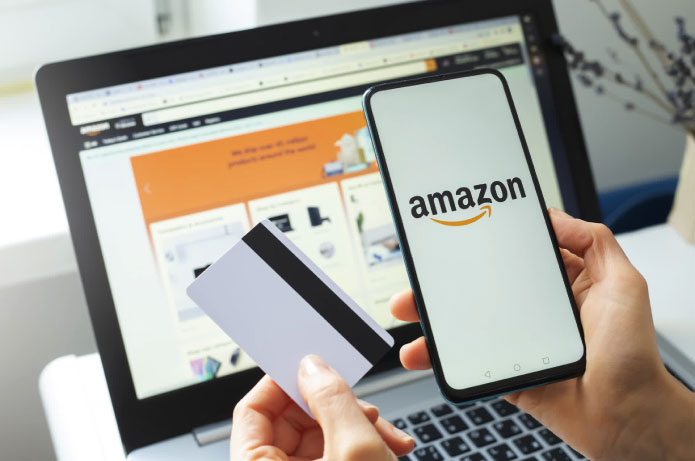For the first time, 57% of the world's consumers claim to be receptive to advertising in general, an increase from 47% last year. This is shown by Media Reactions 2025, by Kantar, a leading global data and marketing analysis company.
In Latin America, this number remains at 57%. Kantar data shows that advertising campaigns have seven times more impact among more receptive audiences, and people are more receptive than ever. "This is good news for marketers in a tough economy, but not enough to overcome the anxiety about the fragmented media landscape, with only two-thirds of marketers confident that they are successfully integrating their campaigns across all media channels," explains Leonardo Pinheiro, director of digital and media at Kantar Brazil.
Globally, the study found that three of the five ad platforms preferred by consumers are Amazon brands. Amazon itself ranks first, Twitch (a live video streaming platform initially focused on video games) debuts in fourth place, and Prime Video in fifth place. The other two brands in the top five of consumers are Snapchat in second and TikTok in third. In Latin America, the three consumer-preferred brands are Amazon, Google, and Pinterest.
Snapchat ads are seen as fun and interesting, and consumers feel that they are less intrusive than they were in 2024. Meanwhile, consumers praised TikTok ads for being particularly eye-catching, fun, and interesting. The preferred ad brands for marketers are YouTube, Instagram, Google, Netflix, and Spotify – The same classification from 2024.
Media Reactions ranks ad platforms based on the receptiveness of consumers and marketing professionals, and no brand is in the top five for both groups.
"Brands need to fight for people's attention, but marketers don't always reflect consumers' ad preferences," explains Pinheiro. "Amazon's ad properties go against the trend, offering a variety of different experiences across its various channels."
According to the executive, consumers trust Twitch ads more than anywhere else, but many marketers assume that the audience passionate about gaming and live streams are restricted and niche groups.
The 2025 edition shows the absence of X in both rankings. About 29% of marketers plan to reduce their spending on X in the next year, and almost one in eight intends to cut their investments entirely.
"Unable to make progress in content moderation, marketers ranked X last among all global brands in terms of trust for the third consecutive year," says Pinheiro.
Below, the highest-rated media brands by preference, globally
| Among consumersAmong marketersAmazon (-)YouTube (-)Snapchat (+4)Instagram (-)TikTok (-2)Google (-)Twitch (New)Netflix (-)Prime Video (New)Spotify (-) |
As part of their study, Kantar asked marketers about their investment plans for 2026 in their advertising channels. Creators and influencers should benefit, as 61% of marketers plan to increase their spending on influencer content in the next year.
"Creator campaigns require a departure from traditional forms of work. Creators are not actors who meet the demands of a brand, so the exchange of value is very different," explains Pinheiro. "Every dollar spent on an influencer is a dollar over which marketers do not have full control. The most successful and authentic partnerships with creators depend on flexibility within clear boundaries around a brand’s values, tone, and assets." This coincides with a predicted increase in investment in social commerce, in which 53% of marketers plan to increase spending.
Already 54% of marketers plan to increase their investments in TV streaming and 19% indicated that they will increase their spending on TV and online video merchandising. However, 26% of marketers plan to reduce their spending on linear TV.
For the director, consumers trust open TV advertising, and it still generates significant impact for the brand, but the cost of creating TV ads makes it tempting to spend a lot to ensure they are seen, which means that marketers tend to invest more in TV relative to its return. "Marketers are right to reallocate part of that budget to make their media mix more efficient, but the creative process needs to start by considering the strengths of each platform – and not by adapting the assets throughout the process," he says.
The translation of the given text from Portuguese to English is: "Consumer receptiveness to AI-generated ads"
Trust implications are influencing consumers, with the number of people bothered by AI-generated ads increasing slightly to 44%, up from 41% last year, and 57% concerned about fake GenAI ads. At the same time, general attitudes towards GenAI are becoming more positive among consumers and marketers, although more marketers use the technology to work more efficiently (70%) than creatively (53%).
In Latin America, 60% of consumers have a positive view regarding generative artificial intelligence.
For Pinheiro, AI is most valuable when it is also adopted as a creative partner. “It is offering marketers new ways to explore ideas, test what resonates, and make smarter, faster decisions. The opportunity it represents is enormous, but this will only come from a mindset of curiosity, not caution,” he says.
Below, the list of the top-rated media channels by receptivity, globally:
| Among consumersAmong marketing professionalsAdvertising at points of sale (-)1. Digital out-of-home advertising (-)Sponsored in-person events (+1)*2. Online video ads (+1)Cinema ads (-1)3. Sponsored in-person events (-1)*Digital out-of-home ads (+2)4. Out-of-home ads (-)Out-of-home ads (-)5. Social commerce ads (NEW)Brackets indicate the change in classification compared to 2024*Compared to "sponsored events" – these were divided into in-person/digital for the first time in 2025 |


